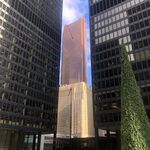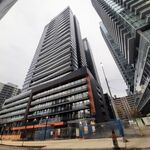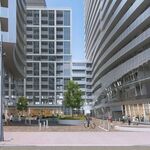Employment lands is about the land use designation in the Official Plan, not zoning. As has been explained it is much harder to change the land use designation than it is to rezone, and with good reason as these are different "levels" of municipal policy.
There is a large factory literally next door to the flea market site we are discussing.
There are a lot of uses that are considered employment lands other than retail and office, such as warehousing, light industrial manufacturing, heavy industrial manufacturing, medical research and production facilities, concrete and aggregate plants, agri-food businesses, cannabis businesses, food and CPG packaging and processing, etc. The City's goal is to protect these uses from being eroded by residential and mixed-use development which in current market conditions can always pay more for land than employment uses. The reasons for this are multiple, including that it is a goal of the City to ensure that people have options to live near their work, and work near their homes, to reduce burdens on roads and transit, and for quality of life reasons. It also contributes to economic diversity in the city. If the whole city is residential and the market crashes, that is going to hurt municipal revenues and economic vitality, whereas if the City has a variety of land uses and economic bases, especially counter-cyclical or non-correlated ones, it is a more stable economic position. And finally is economic development base analysis. If the City continues to protect and promote employment lands, it attracts new businesses and business expansion within the City, which brings tax revenues in addition to the benefits I've mentioned above.
Also as discussed above, an employment land use designation does not mean it has to be employment forever. But what it means is that there are extra steps and criteria that must be met before the City will consider changing the land use. The core of these is the Municipal Comprehensive Review which is a coordinated review of a municipality's compliance with provincial policy requirements, including Employment policies, and to look at land use, demand, growth, policy, etc. all within one comprehensive review (hence the name) rather than just piecemeal, here and there, isolated cases without attention to the whole.
Which is a reminder that the City of Toronto does not just "decide" that it's going to protect employment lands. It in fact is required to do so in accordance with relevant provincial policies.





